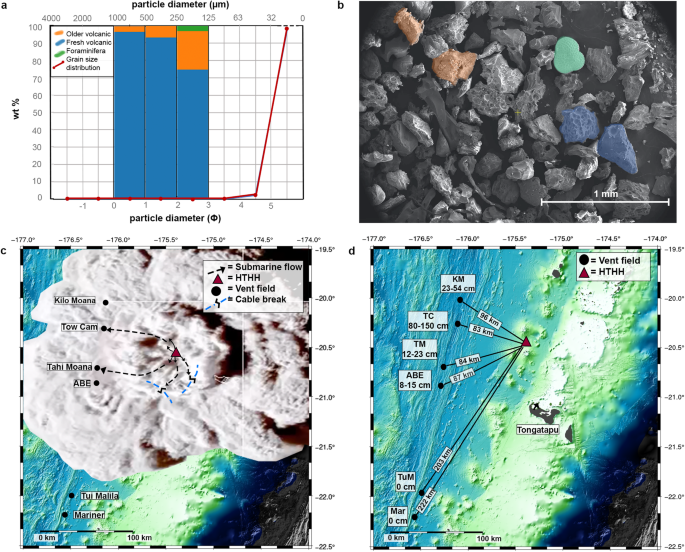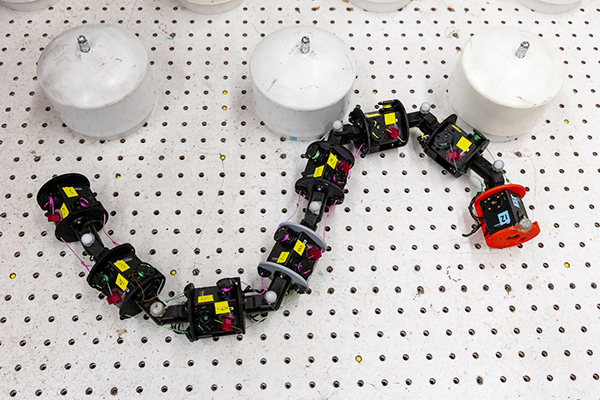2024-05-13 ロードアイランド大学(URI)
<関連情報>
- https://www.uri.edu/news/2024/05/seafloor-life-devastated-near-explosive-volcanic-eruption-in-pacific-uri-research-shows/
- https://www.nature.com/articles/s43247-024-01411-w
2022年フンガ噴火の火山灰に埋もれた深海底熱水噴出孔のコミュニティ Deep seafloor hydrothermal vent communities buried by volcanic ash from the 2022 Hunga eruption
Roxanne A. Beinart,Shawn M. Arellano,Marcus Chaknova,Jasper Meagher,Andrew J. Davies,Joseph Lopresti,Emily J. Cowell,Melissa Betters,Tanika M. Ladd,Caitlin Q. Plowman,Lauren N. Rice,Dexter Davis,Maia Heffernan,Vanessa Jimenez,Tessa Beaver,Johann Becker,Sebastien Bergen,Livia Brunner,Avery Calhoun,Michelle Hauer,Aubrey Taradash,Thomas Giachetti & Craig M. Young
Communications Earth & Environment Published:13 May 2024
DOI:https://doi.org/10.1038/s43247-024-01411-w

Abstract
Mass mortality of marine animals due to volcanic ash deposition is present in the fossil record but has rarely been documented in real time. Here, using remotely-operated vehicle video footage and analysis of ash collected at the seafloor, we describe the devastating effect of the record-breaking 2022 Hunga submarine volcanic eruption on endangered and vulnerable snail and mussel species that previously thrived at nearby deep-sea hydrothermal vents. In contrast to grazing, scavenging, filter-feeding, and predatory vent taxa, we observed mass mortality, likely due to smothering during burial by thick ash deposits, of the foundation species, which rely on symbiotic chemosynthetic bacteria for the bulk of their nutrition. This is important for our broad understanding of the natural disturbance of marine ecosystems by volcanic eruptions and for predicting the effects of anthropogenic disturbance, like deep-sea mining, on these unique seafloor habitats.



